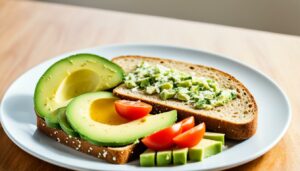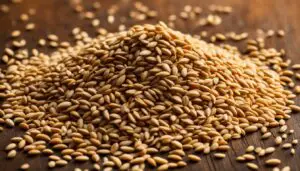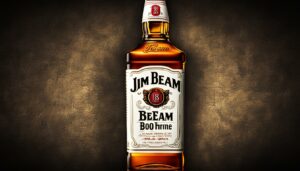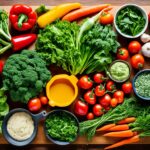Cooking without gluten can be simple when omitting certain ingredients, but gluten-free baking requires a different approach. Gluten, an elastic protein found in grains like wheat, barley, and rye, provides structure and chewiness to baked goods. When using gluten-free flour as a substitute, it’s important to understand how it will behave in recipes. Gluten-free flours cannot be directly substituted for all-purpose wheat flour, and adjustments in ingredients, ratios, and techniques are needed. Understanding these differences is crucial for achieving the desired texture and flavor in gluten-free baking.
Contents
- 1 The Role of Gluten in Baking
- 2 Adjustments in Gluten-Free Recipes
- 3 Different Types of Gluten-Free Flours
- 4 Does Gluten-Free Flour Taste Different?
- 5 Health Benefits of Gluten-Free Baking
- 6 Baking Techniques with Gluten-Free Flour
- 7 Shelf Life of Gluten-Free Flour
- 8 Conclusion
- 9 FAQ
- 9.1 Does using gluten-free flour change a recipe?
- 9.2 What is the role of gluten in baking?
- 9.3 How do I choose the right gluten-free flour substitute?
- 9.4 What adjustments are needed in gluten-free recipes?
- 9.5 What are the different types of gluten-free flours?
- 9.6 Do gluten-free flours taste different?
- 9.7 What are the health benefits of gluten-free baking?
- 9.8 What are some tips for baking with gluten-free flour?
- 9.9 How should gluten-free flour be stored?
- 9.10 Do I need to adjust my baking techniques when using gluten-free flour?
- 9.11 What are the main takeaways from gluten-free baking?
- 10 Source Links
Key Takeaways:
- Gluten-free baking requires adjustments in ingredients, ratios, and techniques.
- Gluten-free flours cannot be directly substituted for all-purpose wheat flour.
- Understanding the differences between gluten-free and traditional baking is crucial for successful gluten-free recipes.
- Gluten-free flours have different texture and behavior, requiring modifications in liquid, leavening agents, and resting times.
- Experimentation and adaptation are necessary for achieving optimal results with gluten-free baking.
The Role of Gluten in Baking
Gluten is an elastic protein that plays a crucial role in the baking process. It is responsible for providing structure and chewiness to baked goods, creating that satisfying texture we love.
When leavening agents such as yeast, baking powder, or baking soda are used in a recipe, gluten helps trap the air released during the baking process. This trapped air allows the dough or batter to rise, resulting in a light and fluffy final product.
However, when it comes to gluten-free baking, the absence of gluten can lead to some challenges. Without gluten, gluten-free baked goods can be grainy, dense, and crumbly, lacking the desired texture and structure.
Not only does gluten contribute to the structure and texture of baked goods, but it also affects the ratio of ingredients needed and the development of gluten during traditional baking. In gluten-free recipes, the absence of gluten may require adjustments in ingredient ratios and techniques to achieve the desired results.
Additionally, resting the batter is often necessary in gluten-free recipes to allow the gluten-free flour to hydrate and soften. This rest time helps improve the texture and overall quality of the final product.
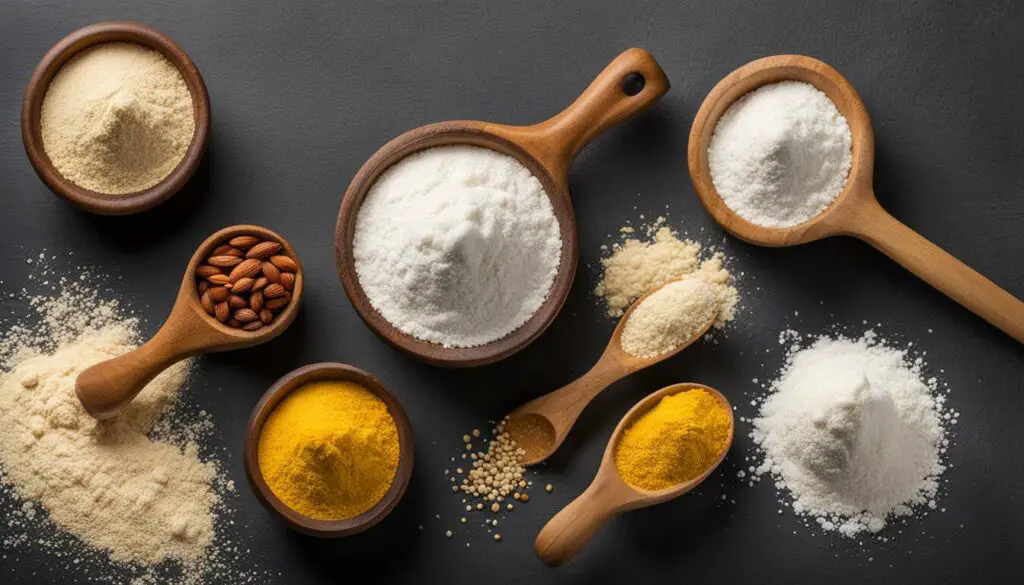
Now, let’s take a closer look at a comprehensive table that highlights different gluten-free flour substitutes, their characteristics, and the benefits or challenges they offer:
| Flour Type | Characteristics | Benefits | Challenges |
|---|---|---|---|
| Rice Flour | Fine texture, mild flavor | Good for baking, versatile | May be gritty in some recipes |
| Millet Flour | Light texture, mildly sweet | Nutritious, suitable for baking | Can be crumbly if used alone |
| Corn Flour | Smooth texture, slightly sweet | Gives a tender crumb, good for breading | May result in coarse texture if overused |
| Amaranth Flour | Nutty flavor, dense texture | Rich in protein and fiber | Best used in combination with other flours |
Adjustments in Gluten-Free Recipes
When working with gluten-free flours, it’s important to make certain adjustments in your recipes to achieve the best results. Gluten-free flours tend to have finer starches, which means they have higher liquid absorption compared to conventional flour. This difference affects the overall texture and consistency of your batters and doughs.
Liquid Absorption: Due to the higher liquid absorption, gluten-free recipes often require more liquid compared to traditional recipes. This ensures that the batter has the right consistency and allows the dry ingredients to hydrate properly.
Looser Batters: With the increased liquid, gluten-free batters can be looser in texture compared to those made with wheat flour. Don’t worry if the batter seems thinner than what you’re used to. This is completely normal and necessary for achieving the desired results.
Increased Leavening: To compensate for the lack of gluten, gluten-free recipes often require increased quantities of leavening agents like baking powder. This helps provide structure and a better rise in the absence of gluten.
Longer Mixing: Since gluten-free flours have different characteristics, longer mixing times may be necessary to ensure proper incorporation of ingredients and a more uniform texture. This extra mixing time helps develop the structure needed for your baked goods.
Batter Rest: Allowing your gluten-free batter to rest for a short period before baking is beneficial. This gives the flour time to hydrate and soften, resulting in a smoother and more consistent texture in your final product.
Longer Baking Time: Due to the higher liquid content in gluten-free batters, they often require longer baking times to fully cook and develop the desired texture. It’s important to follow the baking time specified in gluten-free recipes to avoid ending up with undercooked or gummy textures.
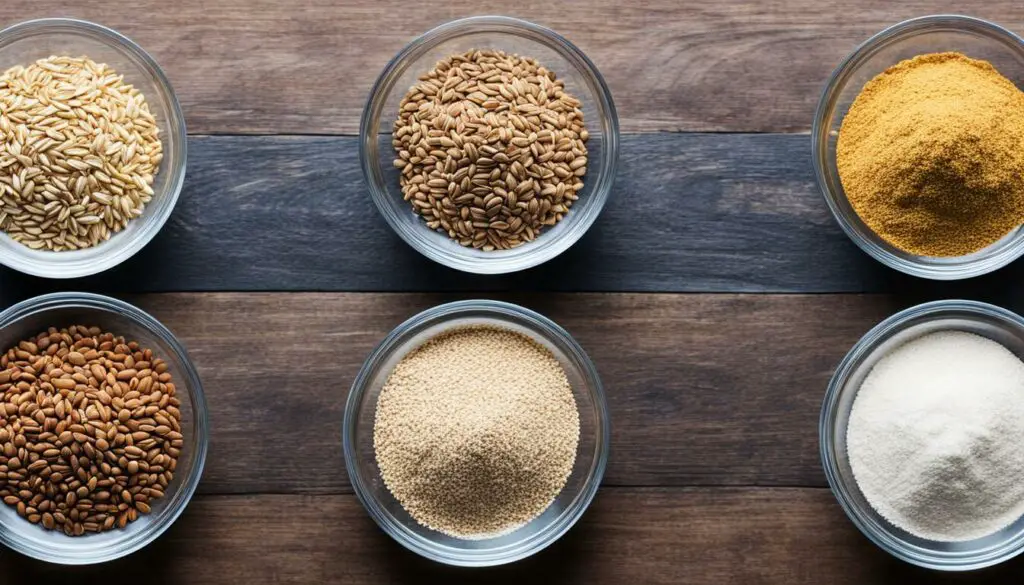
By making these adjustments to your gluten-free recipes, you can achieve great-tasting and delicious baked goods. Remember that gluten-free baking requires a bit of experimentation, and it’s essential to follow the recommended guidelines to achieve the best results.
Different Types of Gluten-Free Flours
Gluten-free baking opens up a world of possibilities with a variety of flours to choose from. Let’s explore the different types of gluten-free flours available:
Gluten-Free Starches
Gluten-free starches such as cornstarch, potato starch, and tapioca starch are commonly used in gluten-free baking. These starches serve as thickeners, adding texture and stability to recipes.
Low-Protein Flours
Low-protein flours, including rice flour, millet flour, and corn flour, are excellent options for gluten-free baking. They provide a light and delicate texture to baked goods. However, these flours may require blending with other flours for optimal results.
High-Protein Flours
For recipes that require a more substantial texture, high-protein flours made from legumes such as garbanzo beans, fava beans, and soybeans can be used. However, these flours tend to have a dense texture and a strong taste. It is recommended to combine them with other flours to balance flavors and achieve desired results.
Here’s a table summarizing the different types of gluten-free flours:
| Flour Type | Examples |
|---|---|
| Gluten-Free Starches | Cornstarch, Potato Starch, Tapioca Starch |
| Low-Protein Flours | Rice Flour, Millet Flour, Corn Flour |
| High-Protein Flours | Garbanzo Bean Flour, Fava Bean Flour, Soybean Flour |
Experimenting with different combinations of these flours can help you achieve the perfect texture and flavor in your gluten-free baked goods.
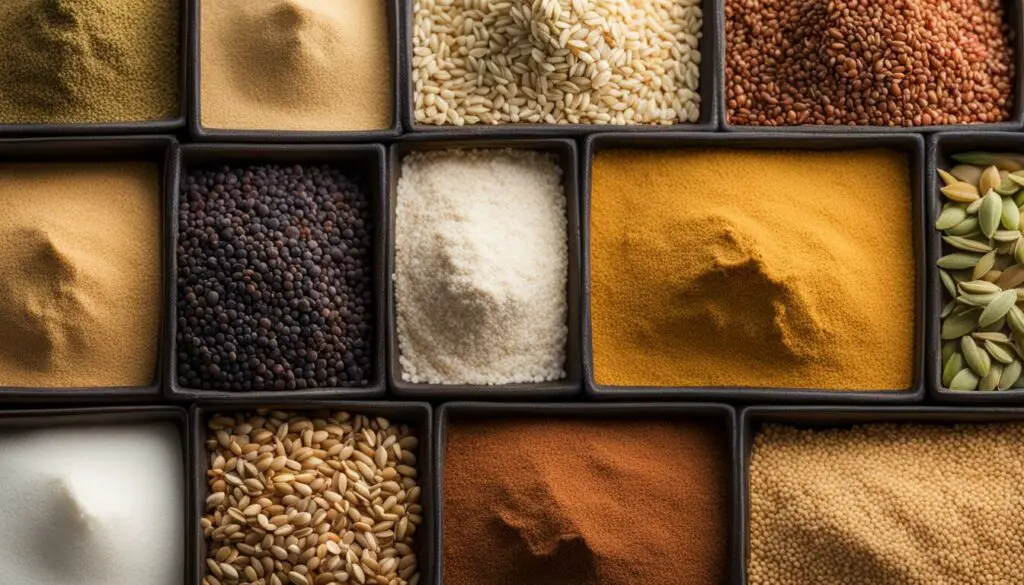
| Tip | Description |
|---|---|
| Use a Gluten-Free Flour Mix | Substitute one-for-one with wheat flour. |
| Add Gums for Structure | Guar gum or xanthan gum can provide a sticky effect. |
| Incorporate Protein Sources | Eggs or liquid egg whites can compensate for the lack of gluten protein. |
| Explore Gluten-Free Cookbooks | Find new recipes and techniques tailored for gluten-free baking. |
| Embrace Experimentation | Adapt old recipes and experiment with new flavors and techniques. |
| Avoid Cross-Contamination | Clean equipment and use separate tools to prevent gluten contamination. |
| Proper Storage is Key | Store gluten-free flours in airtight containers in the refrigerator or freezer. |
| Stay Curious and Enjoy the Process | Have fun and embrace the journey of gluten-free baking. |
Does Gluten-Free Flour Taste Different?
Taste differences in gluten-free flour depend on the types of flour used and their proportions in a recipe. Each gluten-free flour brings its own unique flavor profile, offering a range of options to explore in gluten-free baking. Understanding these taste differences can help you select the right flours for your desired results.
Mild Flavor of Millet Flour
Millet flour, often used in gluten-free baking, has a mild flavor that blends well with other ingredients. It adds a subtly nutty and slightly sweet taste to baked goods, making it a versatile option for various recipes.
Earthy Taste of Buckwheat Flour
Buckwheat flour, despite its name, is not related to wheat. It has an earthy taste that adds depth and richness to baked goods. Buckwheat flour is commonly used in pancakes, muffins, and bread, offering a unique flavor that complements both sweet and savory recipes.
Nutty Flavor of Quinoa Flour
Quinoa flour has a distinct nutty flavor that pairs well with desserts and bread. It adds a subtle complexity to baked goods and can enhance the overall taste. Quinoa flour is often combined with other gluten-free flours to create delicious treats.
Strong Taste of High-Protein Flours
High-protein flours, such as garbanzo bean or soybean flour, are known for their strong taste. These flours may have a more pronounced flavor that some people enjoy. However, due to their robust taste, they are often used in combination with other flours to balance the flavors in baked goods.
Blending different gluten-free flours can help you achieve the desired flavors and textures in your baked goods. Combining mild and nutty flours with smaller amounts of high-protein flours can create a balanced flavor profile in gluten-free recipes.
| Gluten-Free Flour | Taste |
|---|---|
| Millet Flour | Mild, subtly nutty, slightly sweet |
| Buckwheat Flour | Earthy, rich |
| Quinoa Flour | Nutty |
| High-Protein Flours | Strong |
Blending different gluten-free flours can help achieve a variety of flavors and textures in your gluten-free baking.
Next, let’s explore the health benefits of gluten-free baking and how it can cater to specific dietary needs.
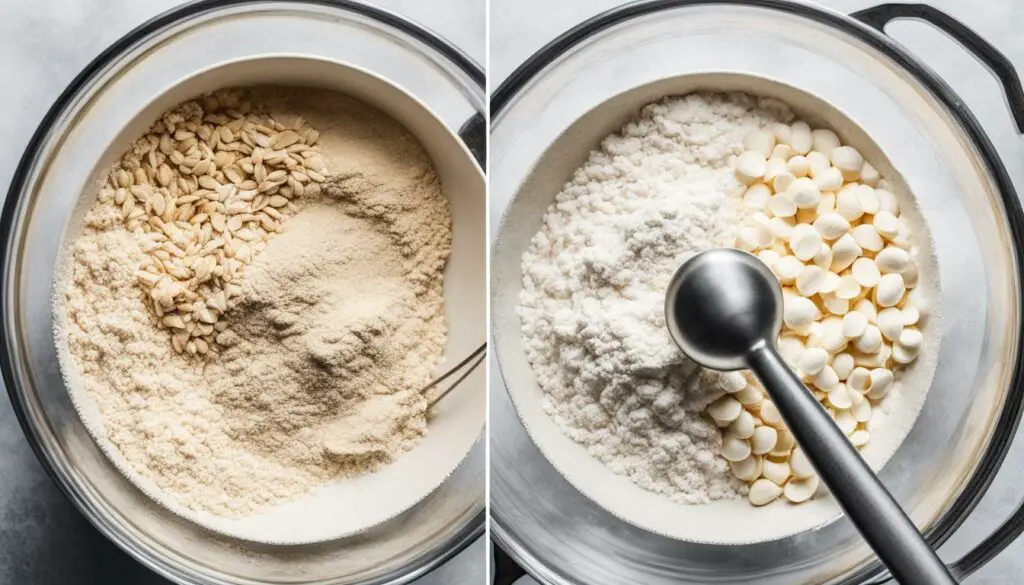
Health Benefits of Gluten-Free Baking
For individuals with gluten intolerance or allergy, gluten-free baking offers a healthier alternative that avoids potential digestive issues. By using gluten-free flours derived from various grains, beans, and nuts, individuals can still enjoy the nutritional benefits of proteins, vitamins, minerals, and fiber. These essential nutrients support overall health and well-being.
Gluten intolerance and gluten allergies can cause discomfort and intestinal problems in affected individuals. By opting for gluten-free baking, these individuals can enjoy delicious baked goods without worrying about the adverse effects of consuming gluten.
Gluten-free flours are rich in proteins, vitamins, minerals, and fiber, providing essential nutrients for the body. Proteins are the building blocks of cells and are crucial for repairing and maintaining tissues. Vitamins and minerals play important roles in various bodily functions, including immune support, metabolism, and energy production. Additionally, fiber promotes digestive health and helps regulate blood sugar levels.
It is important to note that while gluten-free baking can be beneficial for individuals with gluten intolerance or allergy, it is essential to maintain a balanced and varied diet. Consulting with a doctor or nutritionist is recommended to ensure specific dietary needs are met.
| Benefits of Gluten-Free Baking |
|---|
| Provides nutritional benefits such as proteins, vitamins, minerals, and fiber |
| Avoids potential digestive issues associated with gluten intolerance or allergy |
| Supports overall health and well-being |
To learn more about gluten-free baking and its benefits, consult the table above for a summary of the key points.
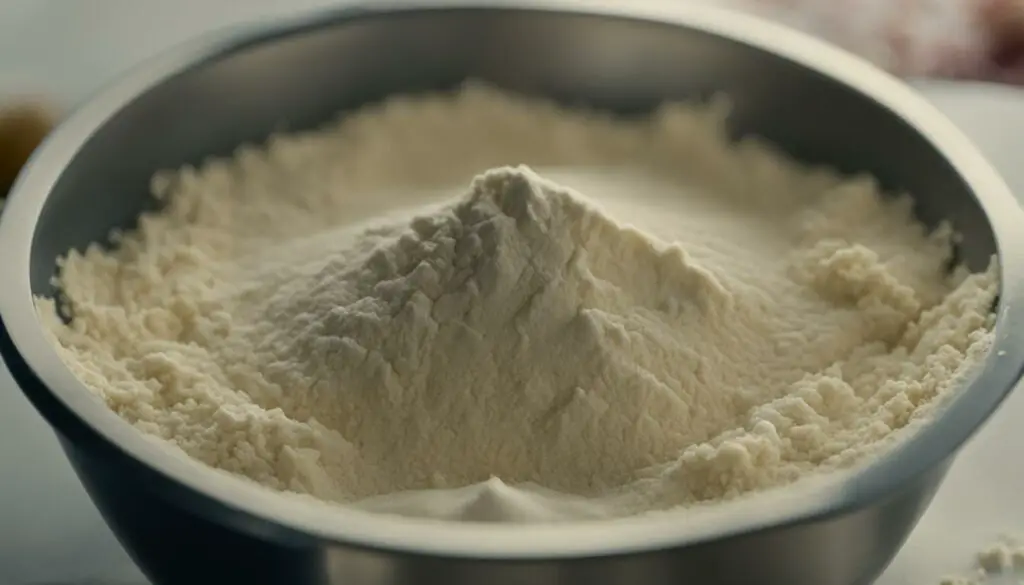
Baking Techniques with Gluten-Free Flour
Baking with gluten-free flour requires some minor adjustments in techniques to ensure successful results. Here are some key techniques to keep in mind when using gluten-free flour:
Sifting the Flour
To avoid clumps and ensure an even distribution of the gluten-free flour in your recipe, it is recommended to sift the flour before incorporating it into the batter or dough. Sifting helps break up any lumps or compacted flour, resulting in a smoother texture and better overall consistency in your baked goods.
Temperature Adjustment
Gluten-free flours sometimes require a slight temperature adjustment in the baking process. The absence of gluten affects how the flour reacts to heat. As a general rule, lowering the oven temperature by about 25 degrees Fahrenheit can help prevent excessive browning and ensure even baking.
Longer Baking Time
Gluten-free baked goods often require longer baking times to fully cook and achieve the desired texture. This is because gluten-free flours tend to retain more moisture, which can make the centers of baked goods take longer to set. It is important to closely monitor the baking time and be patient until the baked goods are fully cooked.
Recipe Observation
Each gluten-free recipe can differ in terms of the flour blend used and the moisture content. It is important to carefully observe the consistency of the batter or dough during mixing and make adjustments as needed. If the batter seems too thick, you can add a little extra liquid, such as milk or water, to achieve the desired consistency. On the other hand, if the mixture appears too thin, you can add a small amount of gluten-free flour to thicken it. Recipe observation and making small modifications as you go will help you achieve the best results with your gluten-free baking.
By implementing these techniques and paying close attention to your recipes, you can overcome the challenges of baking with gluten-free flour and create delicious gluten-free treats with ease.
Shelf Life of Gluten-Free Flour
Proper storage is essential for maintaining the freshness and quality of gluten-free flour. Understanding the shelf life and storage recommendations can help you make the most of your gluten-free ingredients.
Pantry Storage
When stored in the pantry, gluten-free flour typically has a shelf life of one to three months, depending on the type of flour. It is important to keep the flour in a cool, dry place, away from direct sunlight and heat sources. To maintain freshness, it is advisable to store the flour in airtight containers or sealable bags.
Refrigeration
For extended shelf life, you can consider refrigerating your gluten-free flour. Refrigeration can extend the freshness by several months, especially in hot and humid climates. Place the flour in an airtight container or sealable bag before refrigerating, and ensure it is well-sealed to prevent moisture absorption and odors from other foods.
Freezer Storage
For even longer storage, freezing gluten-free flour is a great option. Freezing can significantly prolong the shelf life of the flour, allowing you to have it on hand whenever you need it. Before freezing, transfer the flour to airtight containers or freezer-safe bags to prevent freezer burn and maintain optimal quality.
Remember to label your containers with the type of flour and date of freezing to facilitate organization. When you need to use the flour, allow it to thaw at room temperature before incorporating it into your recipes.
Expiration Dates
It is important to be aware of the expiration dates provided by each type of gluten-free flour. Different flours have different shelf lives, so always check the packaging for specific guidelines. Using expired flour can affect the quality and taste of your baked goods, so it’s best to discard any flour that has exceeded its expiration date.
By following these storage recommendations and being mindful of expiration dates, you can ensure that your gluten-free flour remains fresh and ready to use whenever you’re ready to bake.
Conclusion
Baking with gluten-free flour opens up a whole new world of possibilities for creating delicious and nutritious recipes. Although gluten-free baking requires some adjustments and experimentation, it empowers individuals with gluten intolerance or allergies to still enjoy a wide range of baked goods. By gaining a deeper understanding of the characteristics of gluten-free flour, mastering essential baking techniques, and employing proper storage methods, anyone can confidently embrace the art of gluten-free baking and successfully substitute it in their favorite recipes.
With gluten-free baking, you can create an array of mouthwatering treats without compromising on taste or health. From fluffy cakes to crispy breads and chewy cookies, there are endless options to explore. By using gluten-free flour alternatives and making necessary adjustments in ingredients, ratios, and techniques, you can indulge in delectable gluten-free recipes that cater to your specific dietary needs.
Remember, gluten-free baking is a journey that requires patience and experimentation. Along the way, you may discover new flour blends, innovative cooking methods, and secret tips that enhance your baking skills. So don’t be afraid to try new recipes, follow trustworthy gluten-free cookbooks or blogs, and adapt your favorite traditional recipes into gluten-free versions. With time, practice, and a little creativity, you’ll become a master of gluten-free baking, impressing family and friends with your delectable creations.
So, get ready to embark on a gluten-free baking adventure filled with scrumptious delights. With the right knowledge about gluten-free flour, baking techniques, and storage, you can confidently explore new recipes, create amazing gluten-free dishes, and enjoy the delights of gluten-free baking in your own kitchen.
FAQ
Does using gluten-free flour change a recipe?
Yes, using gluten-free flour requires adjustments in ingredients, ratios, and techniques in order to achieve the desired texture and flavor in the final result.
What is the role of gluten in baking?
Gluten provides structure and chewiness to baked goods, helps trap air for rising, and affects the ratio of ingredients and the development of the batter or dough.
How do I choose the right gluten-free flour substitute?
All-purpose wheat flour cannot be replaced with just one gluten-free grain. It is important to use a mix of gluten-free flours or a premixed, store-bought flour blend that is designed for seamless substitution.
What adjustments are needed in gluten-free recipes?
Gluten-free flours have higher liquid absorption, so recipes may require more liquid and produce looser batters. Increased quantities of leavening agents and longer mixing time may be necessary for structure and rise. Resting the batter is also important.
What are the different types of gluten-free flours?
Gluten-free flours can be categorized into gluten-free starches, low-protein flours, and high-protein flours. Examples include cornstarch, rice flour, and legume flours made from garbanzo beans or fava beans.
Do gluten-free flours taste different?
The taste of gluten-free flours varies depending on the types used. Millet flour has a mild flavor, buckwheat flour has an earthy taste, and quinoa flour has a nutty flavor. Blending different gluten-free flours can help achieve desired flavors and textures.
What are the health benefits of gluten-free baking?
Gluten-free baking is a healthier option for those with gluten intolerance or allergy, as it avoids potential intestinal issues. Gluten-free flours can provide proteins, vitamins, minerals, and fiber.
What are some tips for baking with gluten-free flour?
It is recommended to use a gluten-free flour mix, add gums like guar gum or xanthan gum for sticky effects, and add protein sources like eggs. Gluten-free cookbooks and experimentation can provide new ideas and techniques.
How should gluten-free flour be stored?
Gluten-free flour should be stored properly in the refrigerator or freezer to maintain freshness and shelf life. Pantry storage has a shelf life of one to three months, refrigeration extends it by several months, and freezer storage further prolongs freshness.
Do I need to adjust my baking techniques when using gluten-free flour?
Baking with gluten-free flour may require adjustments such as sifting before use, temperature adjustments, longer baking times, and close observation of each recipe for necessary modifications.
What are the main takeaways from gluten-free baking?
Gluten-free baking requires adjustments and experimentation, but it offers a range of possibilities for creating delicious and nutritious recipes for individuals with gluten intolerance or allergy.


